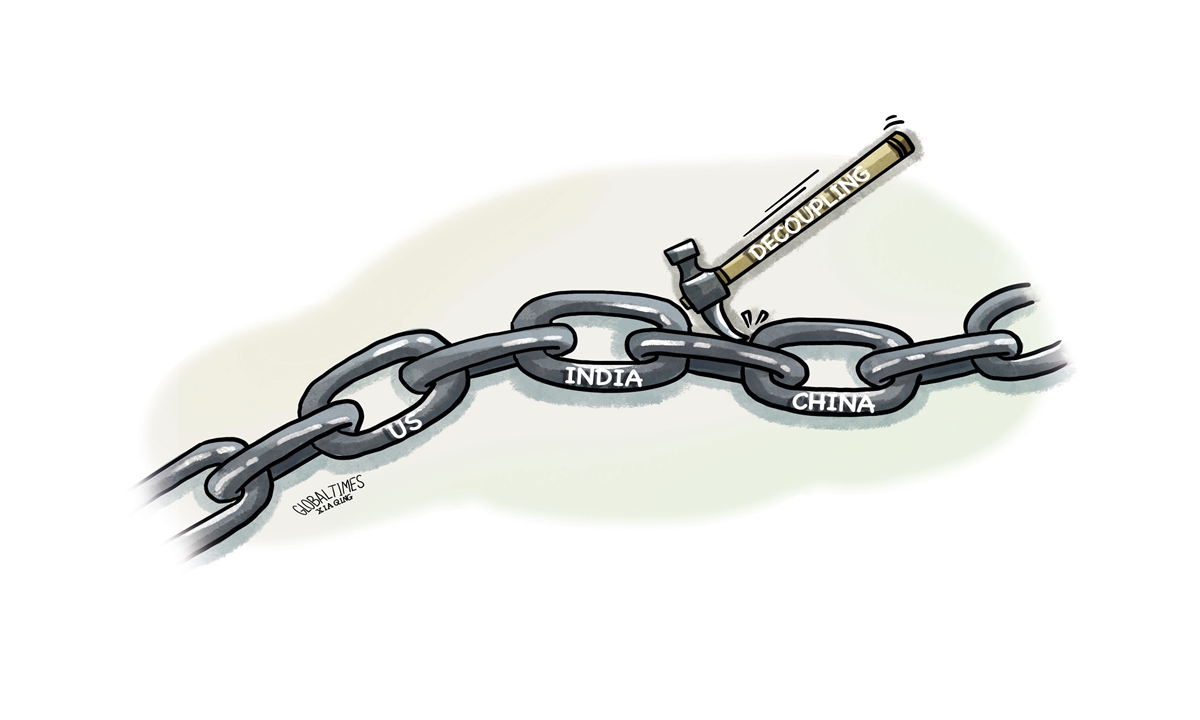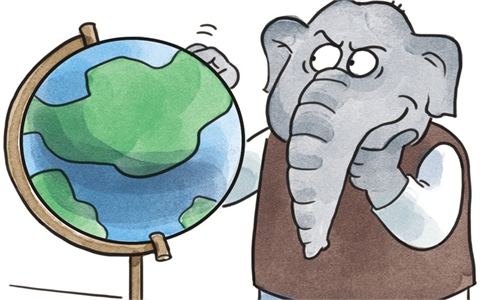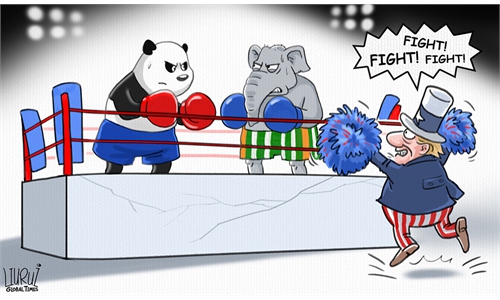
Illustration: Chen Xia/Global Times
Indian Prime Minister Narendra Modi is scheduled to embark on his first state visit to the US from Wednesday to Saturday.
Key priorities for the visit include consolidating recent efforts to deepen their ties in defense as well as the high-technology domain. A framework for cooperation in advanced technologies, a road map for defense industrial cooperation, and an agreement for expanding bilateral trade are also in place, the Diplomat.com reported.
This is Modi's sixth visit to the US since taking over as prime minister in 2014 but his first state visit to the US. As the US seems to ramp up efforts to push India to confront China and harass China's economic progress, the Financial Times recently warned that Washington's embrace of Modi carries a price, saying the US' charm campaign has been noted with dismay by some of India's elites. They concern that the US attempts to "use India as a bulwark" against China.
The economic and trade cooperation between the US and India is currently on rise. The US has become India's largest trading partner in the 2022-2023 fiscal year - from April 2022 to March 2023. It benefits India's economy if its trade with the US can continue to maintain momentum.
However, it should be pointed out that the US has also introduced many geopolitical calculations while increasing economic and trade interaction with India.
For instance, the US is more keen to promote the so-called Indo-Pacific Economic Framework for Prosperity (IPEF) that does not include China, rather than promote the existing mutually beneficial economic and trade cooperation platforms in the Asia-Pacific region with India, such as the Regional Comprehensive Economic Partnership (RCEP).
The US' geopolitical calculations are not difficult to read. As feared by many Indian elites, Washington's vigorous efforts to strengthen economic and trade cooperation with India is primarily to slow down China's economic development. However, this geopolitical calculation of the US is doomed to fail, because China's position in the global supply chain cannot be replaced by India or other economies.
While India's exports to the US are increasing markedly in the 2022-23 fiscal year, India's imports from China also increase significantly.
According to Indian statistics, in the 2022-23 fiscal year, India's exports to the US increased by 2.81 percent, reaching $78.31 billion. During the same period, India's imports from China rose 4.16 percent to hit $98.51 billion. China retains the position as the top import source for India.
According to Chinese customs data, despite the impact of the COVID pandemic and the Western hype that "India's manufacturing industry will replace China," the bilateral trade between China and India exceeded the $100 billion mark for the first time in 2021.
In 2022, China-India trade hit a new high, with cross-border trade reaching $135.98 billion. After the pandemic, India's domestic demand has expanded, and with the upgrading of India's economy, the demand for intermediate products such as Chinese chemicals, active pharmaceutical ingredients and auto parts has increased.
In addition, although American companies have invested at least $54 billion in India, driving the development of industries such as manufacturing and telecommunications, those American companies that have increased investment in India, such as Apple, are now inseparable from China's supply chain. For American companies such as Apple, India seems to offer great market potential, but the country's weaknesses in business environment and industrial supply chain viability remain major hurdles.
These facts illustrate that "India could replace China's position in global supply chain" is a false proposition.
In fact, India's trade with the US cannot replace its trade with China, nor can India replace China in global supply chains. The more India exports to the US, the more it needs to import from China. There exist common interests among China, India and the US by maintaining global industrial cooperation.
If the US and India want to further develop economic and trade cooperation, they should solve the problems between themselves, rather than targeting China. At present, the economic and trade relations are facing many frictions in terms of mutual market opening and access. In fact, the US pays lip service to India but seldom delivers. The reason why India has not joined IPEF is because the US has failed to meet India's demands in market access.
India has the right to choose favorable economic and trade policies to accord its own interests, but it ought to abandon geopolitical calculation, such as considering joining the US' reckless and selfish game to contain China. To promote trade and economic cooperation with China is of great importance for India's future growth and development.
The author is a reporter with the Global Times. bizopinion@globaltimes.com.cn



